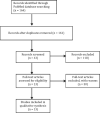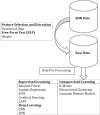Applications of Artificial Intelligence to Electronic Health Record Data in Ophthalmology
- PMID: 32704419
- PMCID: PMC7347028
- DOI: 10.1167/tvst.9.2.13
Applications of Artificial Intelligence to Electronic Health Record Data in Ophthalmology
Abstract
Widespread adoption of electronic health records (EHRs) has resulted in the collection of massive amounts of clinical data. In ophthalmology in particular, the volume range of data captured in EHR systems has been growing rapidly. Yet making effective secondary use of this EHR data for improving patient care and facilitating clinical decision-making has remained challenging due to the complexity and heterogeneity of these data. Artificial intelligence (AI) techniques present a promising way to analyze these multimodal data sets. While AI techniques have been extensively applied to imaging data, there are a limited number of studies employing AI techniques with clinical data from the EHR. The objective of this review is to provide an overview of different AI methods applied to EHR data in the field of ophthalmology. This literature review highlights that the secondary use of EHR data has focused on glaucoma, diabetic retinopathy, age-related macular degeneration, and cataracts with the use of AI techniques. These techniques have been used to improve ocular disease diagnosis, risk assessment, and progression prediction. Techniques such as supervised machine learning, deep learning, and natural language processing were most commonly used in the articles reviewed.
Keywords: artificial intelligence; electronic health record; machine learning; ophthalmology.
Copyright 2020 The Authors.
Conflict of interest statement
Disclosure: W.-C. Lin, None; J.S. Chen, None; M.F. Chiang, Novartis (C), and Inteleretina, LLC (E); M.R. Hribar, None
Figures



References
-
- Charles D, Gabriel M, Searcy T. Adoption of electronic health record systems among US non-federal acute care hospitals: 2008-2012. J ONC data brief. 2013; 9: 1–9.
-
- Coorevits P, Sundgren M, Klein GO, et al. .. Electronic health records: new opportunities for clinical research. J Intern Med. 2013; 274: 547–560. - PubMed
-
- Cano I, Tenyi A, Vela E, Miralles F, Roca J. Perspectives on Big Data applications of health information. Curr Opin Syst Biol. 2017; 3: 36–42.
-
- Khennou F, Khamlichi YI, Chaoui NEH. Improving the use of big data analytics within electronic health records: a case study based OpenEHR. Procedia Comput Sci. 2018; 127: 60–68.
Publication types
MeSH terms
Grants and funding
LinkOut - more resources
Full Text Sources

